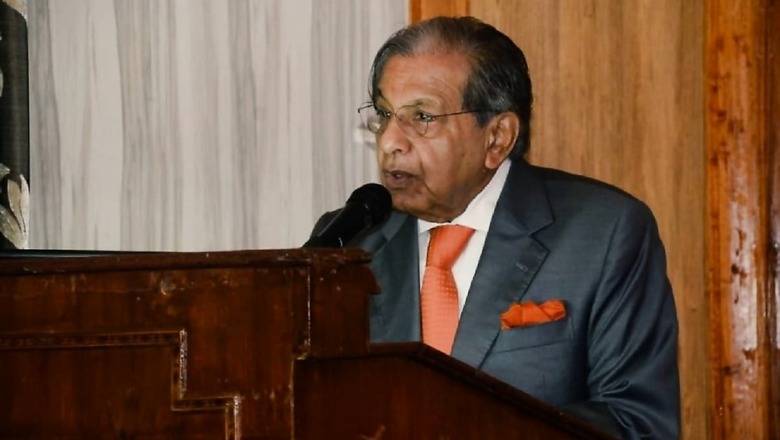
views
India will see a sharp V-shaped recovery in the third and fourth quarter of the current fiscal, but FY21 GDP growth would ultimately be in negative territory as the coronavirus lockdown led to serious demand and supply dislocations, 15th Finance Commission Chairman NK Singh said on Monday.
Stating that global economic depression will continue to cast shadow on growth prospects next fiscal, Singh said the economic expansion in 2022-23 would determine whether or not the initiatives to revive growth are sustainable.
"This pandemic has led to enormous economic consequences by way of lockdown which brought serious dislocation both on demand and supply sides," Singh said at an AIMA event here.
"Q1 and Q2 will not be lofty performances to say the least, I think Q3 and Q4 of the current fiscal year, there would be a very sharp V-shaped recovery, not necessarily that anything fundamental will happen or may happen but because of a lower base. Nonetheless, fiscal year as a whole would end on a negative trajectory," he added.
India's economic growth stood at an estimated 4.2 per cent in 2019-20. The growth projections for current year by various global and domestic agencies indicate a sharp contraction of Indian economy ranging from (-)3.2 per cent to (-)9.5 per cent.
While World Bank had projected Indian economy to contract 3.2 per cent, the International Monetary Fund (IMF) and Asian Development Bank (ADB) pegged it at 4.5 per cent and 4 per cent respectively. S&P and Fitch has projected a 5 per cent contraction, while Nomura said growth would be (-)5.2 per cent in 2020-21.
More recently, domestic rating agency Icra has revised its forecast for contraction in the country's GDP in the current fiscal to 9.5 per cent from 5 per cent earlier, saying continued lockdowns in some states have affected the recovery seen in May and June.
Singh further said for a country of India's size, the ideal debt to GDP ratio should be 60 per cent and to reach that level in the medium term would require fiscal deficit to be aligned to this debt objective.
India's debt to GDP ratio stood at 70 per cent of GDP in the 2019-20 fiscal and is projected to touch 80 per cent in the current fiscal.
With regard to bank recapitalisation, Singh said there was a need to be far more significant and decisive in banking recapitalisation plan. "I think over the next five years, there is huge public outlay which will be needed to keep PSU bank adequately recapitalised," he added.



















Comments
0 comment